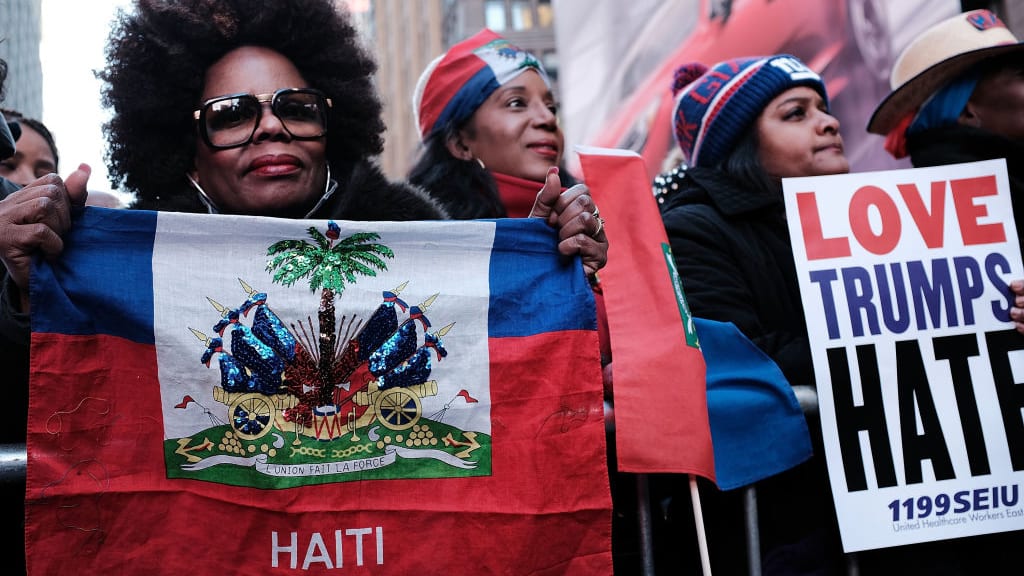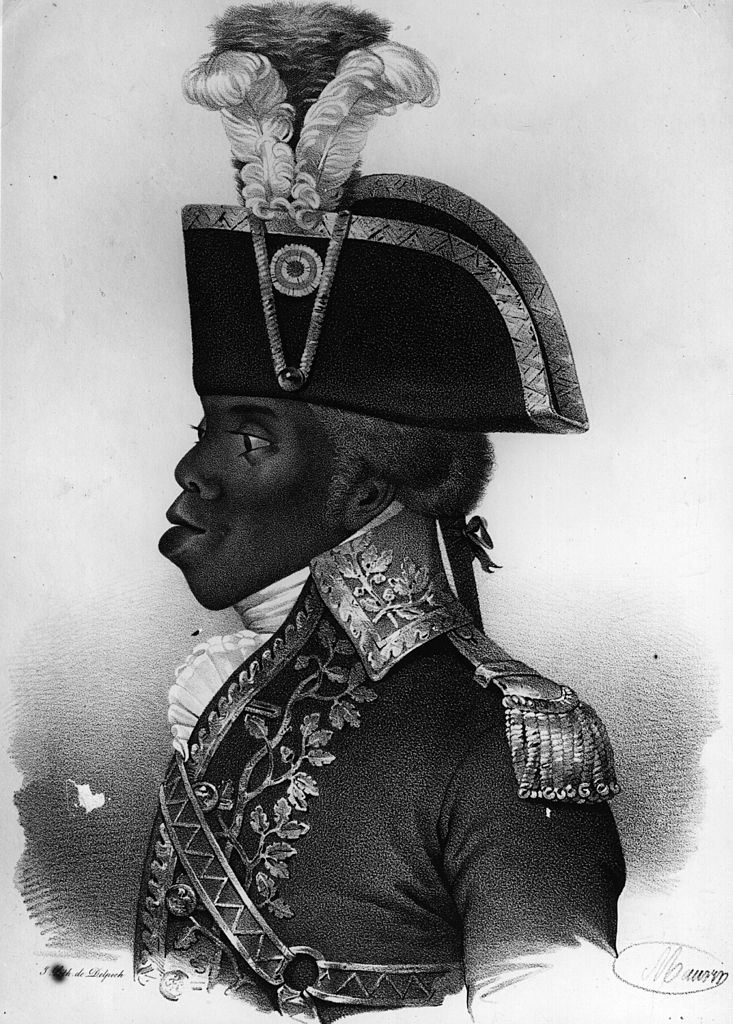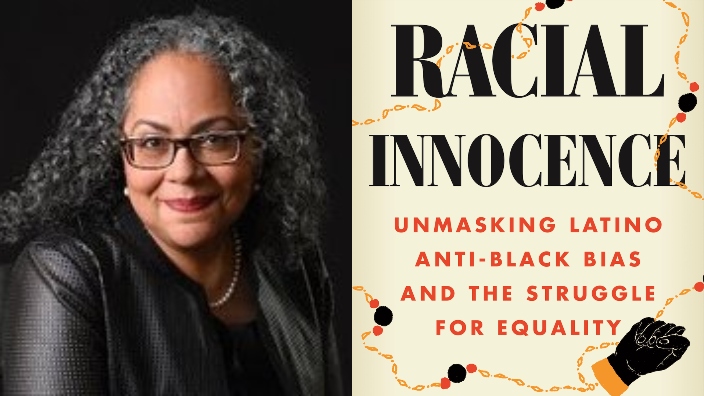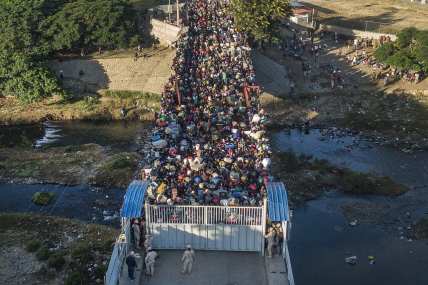Why is the Dominican Republic deporting Black people to Haiti? Activists say it’s history repeating itself
A recent warning by the U.S. Embassy to “darker-skinned” Americans traveling abroad in Hispanola highlights the long history of racism against Haitians by its neighboring country.
For Black Americans who were excited to vacation in the Dominican Republic, the warning was urgent:
“Carry your passport with you.”
The U.S. Embassy issued the guidance to “darker-skinned” citizens of “African descent” after reporting that many travelers had been stopped and questioned by Dominican immigration officials “based on their skin color.”
Not only had travelers been detained, but an estimated 43,000 people, mostly of Haitian origin, were being deported across the border to Haiti. For some, it meant being sent back home to a nation in the midst of socio-political chaos, with a cholera outbreak, presidential assassination, and a fuel crisis.

But for others, including an estimated 1,800 children deported without their parents, it meant going to a country they didn’t even belong to.
“This is not only just happening to people who are actually Haitian, who have their Haitian passports and their Haitian citizenship, but people who have their ID as proof of whether they are Dominican of Dominican nationality,” says Isa Reyes, research manager for In Cultured Company, a leadership development organization focused on Haitian and Dominican relations. “We have seen even people from outside of the Dominican Republic and Haiti, Black people from the U.S., from Europe, who are also being removed to Haiti despite having perhaps no connection to Haiti at all.”
While the deportations and resulting impact on Black foreigners may be making headlines, the deportation of Haitians is part of a long legacy of tension between Haiti and the Dominican Republic — a legacy activists say has racist roots.
“It’s important to understand what the roots of this conflict are and that they’re essentially a conflict between the D.R. and its own Blackness,” says France Francois, founder and CEO of In Cultured Company, in an interview with theGrio. “A lot of people paint this as an issue between Haiti and the Dominican Republic, but you don’t see the same kind of retaliatory actions on the Haitian side.”
While Haiti and the Dominican Republic may share the same island, known as Hispanola, the two have had different fates, in part because of the actions of colonizers.
After Christopher Columbus stumbled upon Hispanola in 1492, an island already inhabited by the Taino people, he would establish a settlement there on behalf of the Spanish empire. Eventually, the other mountainous side of Hispanola we know today as Haiti would be settled by the French and become a creole-speaking country known as Saint-Domingue.
Both sides of the island decimated the Taino population, trafficked Africans and enslaved them for free labor, beginning as early as 1503 in Santo Domingo, where the enslavement of Africans in the Americas began. The French brought in an estimated 800,000 African inhabitants to Haiti, working them brutally and also overworking the land. The Africans revolted in 1791 and became the first independent Black nation in the West in 1804. That independence would be punished, though, with the United States and other developed nations not recognizing Haiti out of fear of emboldening a “slave empire.”

The impact would be crippling for Haiti’s economy, which also struggled as it had to pay back a whopping $20 billion to $30 billlion debt to France over the course of 122 years to get free. Meanwhile, in the Dominican Republic, a Spanish-speaking population had developed and with it, a separate economy. Despite periods of cooperation between the two nations, and even a 22-year rule by Haitians, racism, colorism and xenophobia would foster tensions.
“Dominicans are often taught that they are a white Spanish nation, in contrast to Haiti being an African Creole-speaking nation,” Francois tells theGrio. “And this allowed internalized anti-blackness to manifest in the D.R.”
In 1937, Dominican dictator Raphael Trujillo ordered a massacre of an estimated 20,000 Haitians. Trujillo, an admirer of Hilter who hid his own traces of Haitian ancestry, on his mother’s side, used racist ideologies to justify the killings. Men, women and children, many who worked for American sugar companies, were slaughtered in the river that borders the nations, in what became known as the Parsely Massacre.
“One of the last ethnic cleansings in the region was conducted against anyone assumed to be Haitian,” Francois recalls. “The Dominican Republic continues to be a state controlled by a white supremacist leaning and a white elite. Now you see that the current president, [Luis] Abinader, is using some of the same language and the same tactics to remove people or seem to be meaning black people from the nation.”
The Dominican government has pointed the finger back at the U.S. for its own controversial treatment of U.S. migrants and Abinader has explicitly rejected claims that Haitians are being mistreated during deportations.
“You can’t ask anything more from the Dominican Republic. … We’re going to continue the deportations and next week we’re going to increase them,” Abinader said in response to the criticism, according to the Associated Press.
“They’re not treating the South American, the Venezuelan immigrants who have overstayed their visas in the Dominican Republic in the same way,” says Francois. “In fact, the Dominican Republic has offered their help to European migrants who have been facing refugee crises as well, extending their help to Ukrainian refugees. So it’s a very deliberate attempt to enact violence on Black people in the Dominican Republic.”
Watch the full conversation with France Francois and Isa Reyes above and on this week’s episode of theGrio Weekly.
Natasha S. Alford is an award-winning journalist, filmmaker, and media executive driven by the power of storytelling. As the VP of Digital Content and a Sr. Correspondent, Natasha leads strategy around the creation of original content for TheGrio.
TheGrio is FREE on your TV via Apple TV, Amazon Fire, Roku and Android TV. Also, please download theGrio mobile apps today!


